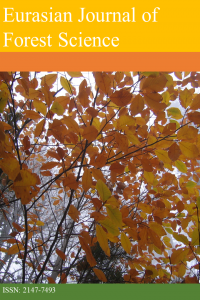
Eurasian Journal of Forest Science
Yazarlar: Derya Evrim KOÇ, Jens Christian SVENNİNG, Meral AVCI
Konular:Fen
DOI:10.31195/ejejfs.435962
Anahtar Kelimeler:Climate change,Species Distribution Model,Taxus baccata,Bolkar Mountains,Central Taurus Mountains
Özet: The Pleistocene is an important period for assessing the effects of climate change on biological diversity. In the beginning of this period, many tree species disappeared in the flora of Europe, with ongoing, but smaller losses later, and many tree species exhibiting repeated strong range shifts mostly at the end of the period. It is thought that some areas will be more affected from possible climate change. The Mediterranean Basin is the most important among the mentioned sensitive areas. Species with scattered, relict populations in the region would be more affected by future climate change. One such species is Taxus baccata. Taxus baccata, which is distributed throughout the temperate zones of Northern hemisphere, is the only species of Taxus to be naturally distributed in Turkey. Apart from its general dispersal area in the north of Turkey, Taxus baccata is seen in small groups in protected local areas in southern Anatolia. The aim of this study is to determine the potential effects of past and future climate change on the distribution of Taxus baccata in Bolkar Mountains, using species distribution modelling. We studied how the potential distribution has been affected by the Last Glacial Maximum (LGM) climate and the subsequent climate shift to the present, and it can be expected to be affected by future climate change, as represented by a range of future climate change scenarios. For this purpose, Maxent is used for determining the distribution of Taxus baccata. Our Maxent model results show that the AUC values are calculated as 0,85 and 0,80 in sequence. Our results show that the Taxus baccata would have found suitable conditions in the Bolkar Mountains area even during the LGM, pointing to this as an important refuge area. With also find that the potential distribution in Kadincik Valley (on the southern slope of Bolkar Mountains) of Taxus baccata has been reduced with the shift to a Holocene climate, and the distribution in Taurus Mountains is likely diminish even further under future climate change. Our results show that Taxus baccata is a cool-climate relict in southern Turkey and that its distribution is likely to come under further pressure from future climate change. This situation is likely shared with many other temperate plant species persisting with small populations in mountain areas in the region.
Dergi editörleri editör girişini kullanarak sisteme giriş yapabilirler. Editör girişi için tıklayınız.